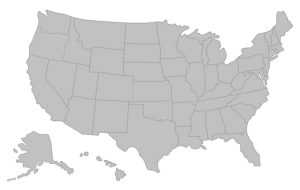Translation is a Gender Fluid World
The world is changing, and people’s understanding is changing right along with it. It’s a non-binary world, with more than just “her and him” living in it. A person who is non-binary “may identify as gender fluid, agender (without gender), off the binary, or something else entirely” (verywellmind).
As Medium describes gender fluidity, “Instead of being just a man or woman…a gender fluid person may be a man at one time, a woman at another, both at once, or neither, or something completely different.”
Handling Gender in Different Ways
Many people in the gender fluid community are finding ways to adapt different languages. In some areas, such as Russia, gender fluid expression must be done discreetly. One person in Next describes how people are finding ways to “assert their identity, even while remaining somewhat discrete [sic]… it’s kind of common in speech to swallow your endings…taking away the ending of the word can take away the gender binary, because that’s usually where gender is encoded.” This is easier done when speaking, but not as easy when translating.
Breaking Down the Gender of Languages
Some languages, such as Mandarin and Hungarian, are genderless.
Some languages, such as Mandarin and Hungarian, are genderless. They have words that describe a particular gender, such as man and woman, but have no pronouns for male and female people or objects. Other languages, such as English, are known as natural gender languages. People are characterized by gender-specific pronouns, but all other nouns can be described using the word “it”; they don’t have a gender. This can create issues when a writer or speaker wants to use inclusive language when describing people. In Romance languages, nouns are built on the masculine and feminine. The five main Romance languages are:
- Spanish
- French
- Italian
- Portuguese
- Romanian
Gender can be found and described in people and animals, such as the Spanish el gato (male cat) or la gata (female cat). But even objects that are genderless are classified as either masculine or feminine. For example, in French, la revue (magazine) is feminine, while le livre (book) is masculine.
How Does It Translate?
All of these changes must be taken into account when translating gender across different languages. It is more common than ever before to find people who openly identify as gender fluid and non-binary. For these people, in English, more emphasis is placed on pronoun usage; to be more inclusive, words such as “they and them” may be used in conversation to replace the traditional “he and she.” These gender-neutral pronouns can make translation trickier as they have commonly referred to a group as opposed to an individual, making it harder for translation apps to ensure accuracy. Human translators, however, can look at the context of the information and know how to properly convey the original meaning in another language.
Regardless of gender, our professional translators work in over 75 language pairs to make sure that your work is translated with the highest level of accuracy. In an ever-changing world, we keep up with both individual and industry translations that can make the difference in how your customers see you. If you’re in need of a professional translation company that’s ready to meet your challenges head-on, contact us today.






















Leave a Reply
Want to join the discussion?Feel free to contribute!